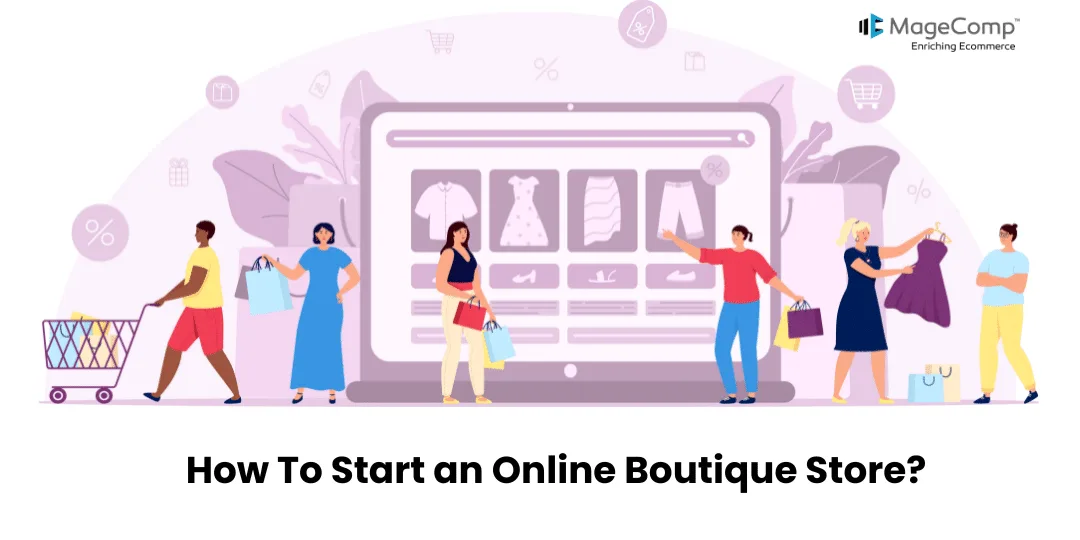Starting an online boutique store can be an exciting venture, combining your passion for fashion with the potential for a thriving business. In this comprehensive guide, we’ll explore the key steps to kickstart your online boutique and pave the way for success.
What is an Online Boutique?
An online boutique is a digital retail space that specializes in selling unique and curated products, often focusing on a specific niche or style. Unlike larger e-commerce platforms, online boutiques typically offer a carefully selected inventory of products, providing customers with a more personalized and niche shopping experience. These boutique stores often emphasize high-quality items, unique designs, and a strong sense of brand identity. Customers can browse and purchase products directly through the boutique’s website, making it a convenient and tailored shopping experience.
Steps to Start an Online Boutique Store
1. Market Research and Niche Selection
Before diving into the world of online boutiques, conduct thorough market research to identify trends and potential gaps in the market. Define your niche-whether it’s sustainable fashion, vintage clothing, or a specific style. Understanding your target audience will guide your product selection and marketing strategies.
2. Create a Business Plan
A solid business plan is the foundation of any successful venture. Outline your boutique’s mission, target audience, unique selling points, and financial projections. Consider your budget for inventory, website development, marketing, and other essential elements.
3. Legal Considerations
Ensure your online boutique complies with local laws and regulations. Register your business, obtain any necessary licenses, and be aware of tax obligations. This step is crucial for building a legal and trustworthy foundation for your store.
4. Choose a Platform
Selecting the right e-commerce platform is a pivotal decision. Platforms like Shopify, Magento, WooCommerce, and BigCommerce offer user-friendly interfaces and customizable options. Evaluate each platform’s features, pricing, and ease of use to determine the best fit for your online boutique.
5. Design your Online Store
Invest time in creating an appealing and user-friendly website. Choose a clean and visually pleasing design that reflects your brand identity. Ensure easy navigation, high-quality images, and a seamless checkout process to enhance the overall customer experience.
6. Build a Strong Brand Identity
Your brand is more than just a logo – it’s the overall perception of your boutique. Develop a compelling brand story, choose a consistent color palette, and create a memorable logo. A strong brand identity helps build trust and recognition among your target audience.
7. Source Quality Products
Establish relationships with reliable suppliers to ensure the quality and uniqueness of your products. Consider factors like sustainability, ethical sourcing, and affordability. A diverse and well-curated inventory will attract a broader range of customers.
8. Implement Effective Marketing Strategies
Develop a marketing plan to increase your boutique’s visibility. Utilize social media platforms, content marketing, and influencer collaborations to reach your target audience.
9. Optimize for SEO
Improve your website’s search engine optimization (SEO) to increase organic traffic. Use relevant keywords, optimize product descriptions, and regularly update your content. A strong online presence is crucial for attracting and retaining customers.
10. Provide Excellent Customer Service
Exceptional customer service is a powerful tool for building a loyal customer base. Respond promptly to inquiries, address concerns, and go the extra mile to ensure customer satisfaction. Positive reviews and word-of-mouth referrals can significantly impact your boutique’s success.
11. Monitor and Adapt
Regularly analyze your boutique’s performance through analytics tools. Monitor sales, track website traffic, and gather customer feedback. Use this data to identify areas for improvement and adapt your strategies accordingly.
12. Stay Informed About Trends
The fashion industry is dynamic, with trends constantly evolving. Stay informed about current fashion trends, consumer preferences, and industry developments. Keeping your boutique’s inventory aligned with market demands will enhance your competitiveness.
Conclusion
Starting an online boutique requires a blend of creativity, business acumen, and dedication. By conducting thorough research, building a strong brand, and implementing effective strategies, you can turn your passion for fashion into a successful online business. With careful planning and continuous adaptation, your online boutique has the potential to thrive in the competitive world of e-commerce.
Reach out to experts who will help you smoothly launch your online boutique store.








